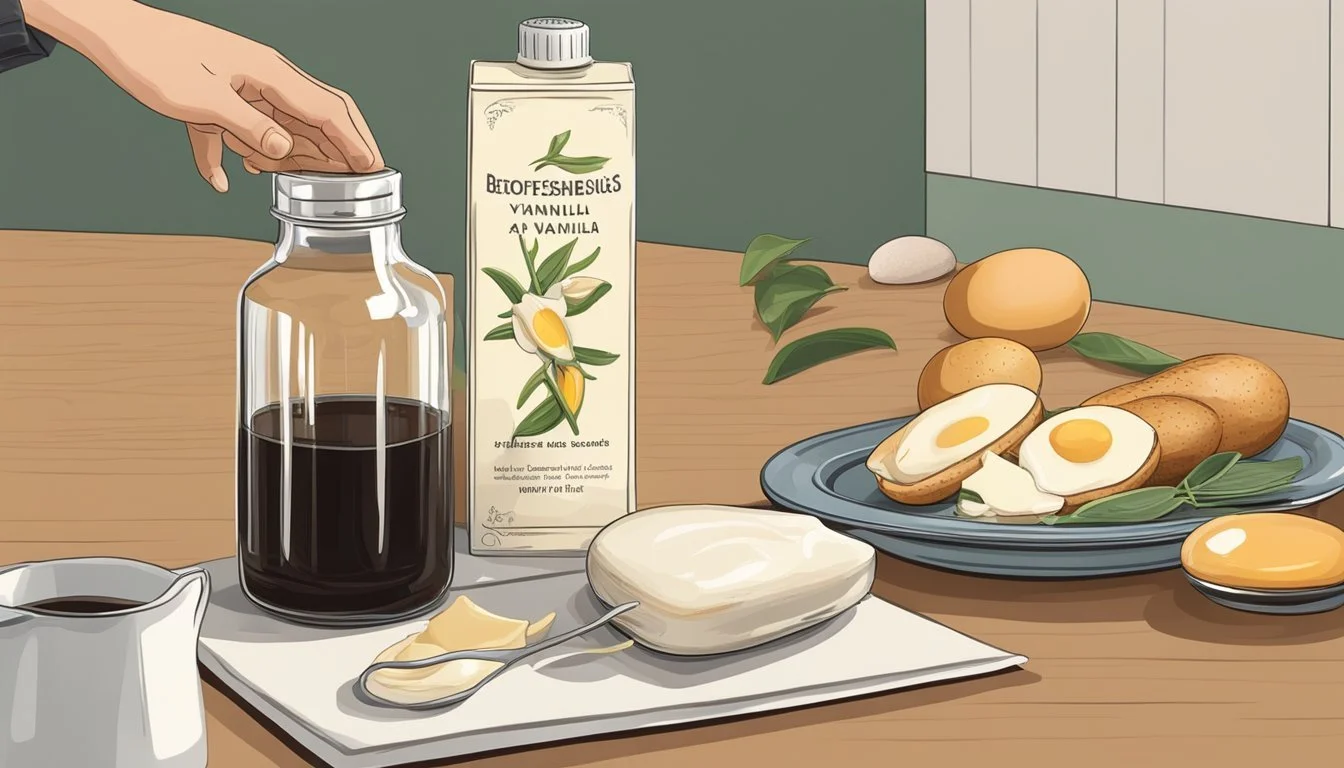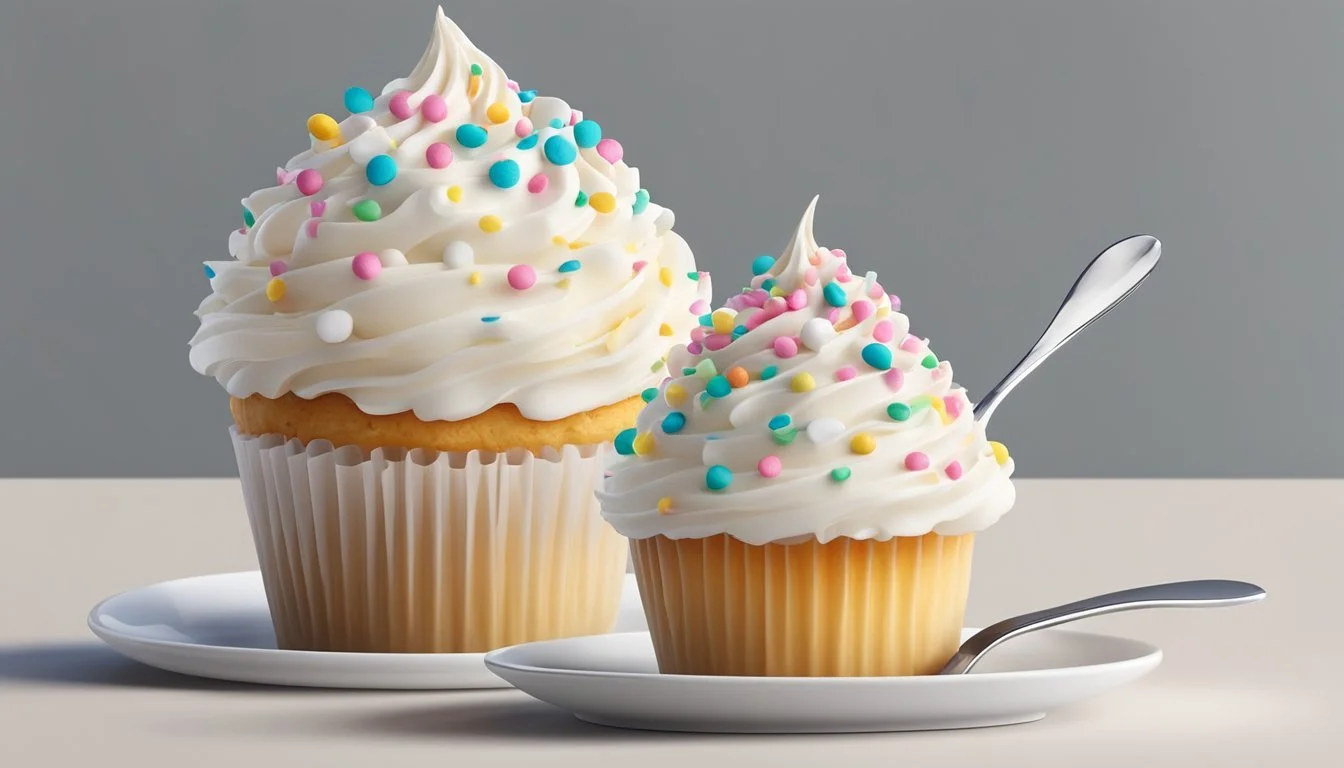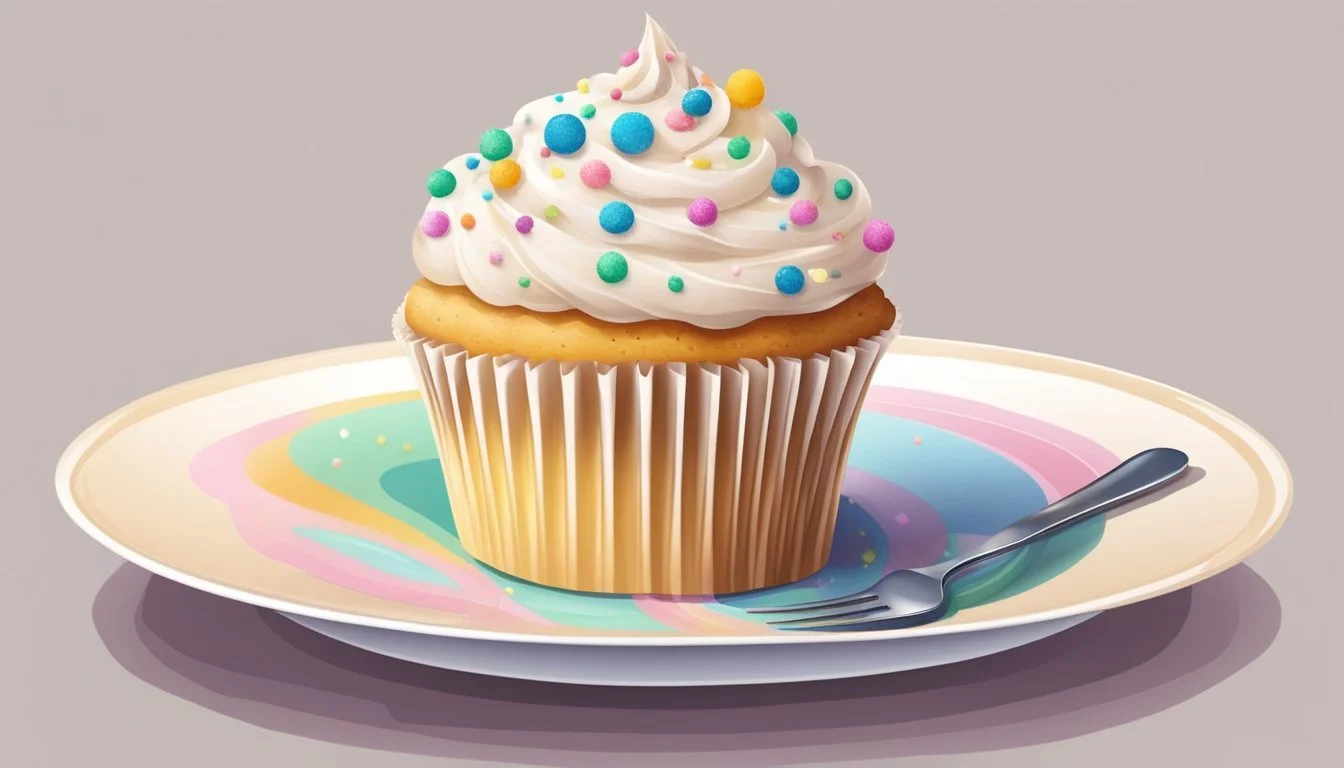How Do You Eat a Vanilla Cupcake?
Unveiling the Proper Techniques
Vanilla cupcakes, with their classic flavor and soft, tender crumb, are a beloved treat enjoyed by many. While the joy of eating a vanilla cupcake seems like a straightforward affair, there are various preferences and techniques that enhance the experience. Whether at a birthday party, a cozy family gathering, or as a delightful treat to oneself, vanilla cupcakes offer a canvas of simplicity that appeals to the palate of both children and adults alike. The key to their enjoyment lies not only in their taste but also in the art of eating them.
At the heart of these confections is a vanilla cupcake recipe that typically involves a combination of flour, sugar, butter, and eggs, with the essential addition of vanilla extract to give them their characteristic flavor. The precise method of incorporating these ingredients, as well as the quality and proportions used, can greatly influence the texture and taste of the final product. Skillful baking yields a cupcake that is moist and light, with a fine crumb that holds together just enough to allow for the perfect bite.
When it comes to making the perfect vanilla cupcake, attention to detail is paramount. The process often begins with the creaming of butter and sugar, followed by the gradual mixing of eggs and dry ingredients. Bakers diligently scrape down the sides of the mixing bowl to ensure even blending. The result is a smooth batter, which is then portioned into cupcake liners and baked until they have risen beautifully and passed the toothpick test. The cupcakes, once cooled, can be dressed with an assortment of frostings, each adding its own texture and complexity to the simple vanilla base.
Selecting Quality Ingredients
The choice of ingredients can significantly affect the taste and texture of vanilla cupcakes. Premium quality ingredients contribute to a more sumptuous flavor and optimal consistency.
The Importance of Unsalted Butter
Unsalted butter is preferred in baking because it allows complete control over the salt content of the cupcakes. It should be fresh and of high quality to ensure a rich flavor and proper aeration when creamed, resulting in a fluffy texture.
Choosing the Best Vanilla Flavor
Two excellent options for infusing vanilla flavor are vanilla extract and vanilla bean paste. Pure vanilla extract offers a robust flavor, while vanilla bean paste provides a more pronounced taste along with the aesthetic of vanilla bean specks. Avoid synthetic vanilla flavorings to ensure a natural and rich taste.
Identifying Fresh Eggs
Eggs contribute to the structure and moisture of cupcakes. They should be fresh and at room temperature for more volume when whipped. Check the expiry dates, and ensure there are no cracks or odd smells.
Sourcing All-Purpose or Cake Flour
For a tender crumb, all-purpose flour is a common choice, but cake flour has a lower protein content that can result in an even lighter texture. Whichever you choose, ensure it's well-sifted and free from lumps for an even batter.
Selecting a Raising Agent
Raising agents like baking powder and baking soda are crucial for leavening. Baking powder is double-acting and releases gases at room temperature and when heated, while baking soda reacts with acidic ingredients. It's vital to use fresh raising agents to ensure the cupcakes rise properly. Use the following table as a quick reference:
Raising Agent Purpose Note Baking Powder Leavening Rises at room temp and when heated Baking Soda Leavening Requires an acidic component to activate
By paying close attention to these ingredient choices, the result will be vanilla cupcakes that are both flavorful and finely textured.
Preparing the Cupcake Batter
Creating the perfect cupcake batter involves a methodical approach to mixing the ingredients to ensure moisture and flavor. The process includes creaming together fats and sugars, incorporating binders and flavorings, and carefully alternating between dry and wet ingredients to achieve a consistent and smooth mixture.
Creaming Butter and Sugar
The baker starts by creaming room-temperature unsalted butter with granulated sugar until it becomes light and fluffy. This step incorporates air into the batter, which aids in the rise and texture of the cupcakes. It's crucial to use unsalted butter so the baker can control the amount of salt in the recipe.
Incorporating Eggs and Vanilla
Next, eggs, one at a time, are mixed into the butter and sugar combination, ensuring each egg is fully integrated before adding the next. The eggs bind the mixture, providing structure to the cupcakes. Vanilla extract or vanilla bean paste is then added to impart the signature vanilla flavor.
Alternating Dry and Wet Ingredients
The baker then alternates adding dry ingredients—such as flour, baking powder, and salt—with wet ingredients like milk, buttermilk, or sour cream. Starting and ending with the dry ingredients is standard practice. This alternation prevents overmixing, which can lead to a dense cupcake, and promotes a moist crumb.
Ensuring a Smooth and Even Mix
Finally, the batter should be mixed until just combined, ensuring no flour pockets remain. Overmixing at this stage can develop the gluten in the flour too much and result in a tough cupcake. A smooth and even batter signifies that the mix is ready for portioning into the cupcake liners.
Baking the Cupcakes
To achieve perfect vanilla cupcakes, precision in baking is crucial. This involves correctly filling cupcake liners, setting the oven at the right temperature, testing for doneness, and allowing the cupcakes to cool properly before adding frosting.
Filling the Cupcake Liners
One should fill the cupcake liners just over halfway to allow the batter room to rise without overflowing. An ice cream scoop can provide a consistent amount of batter in each liner, ensuring uniform cupcakes.
Preheating and Timing the Oven
Preheating the oven to the recommended temperature, often 350°F, is essential for even baking. One typically bakes cupcakes for 18-20 minutes. If an oven doesn't heat evenly, rotate the cupcake pan halfway through the baking time.
Testing Cupcake Doneness
The simplest method to test doneness is by inserting a toothpick into the center of a cupcake. If it comes out clean or with a few crumbs, the cupcakes are ready. Overbaking leads to dryness, so one should watch the cupcakes closely as they near the end of the recommended baking time.
Cooling Before Frosting
Once baked, transfer the cupcakes from the cupcake pan to a cooling rack to prevent them from becoming soggy. They should cool for at least one hour before frosting, to ensure the frosting does not melt when applied.
Decorating and Frosting
When decorating a vanilla cupcake, the frosting not only adds flavor but also serves as the foundation for a variety of garnishes. Selecting a suitable frosting and applying it with skill can elevate the visual appeal and taste of the cupcake.
Choosing the Right Frosting
Buttercream frosting is a classic choice known for its smooth texture and versatility. Vanilla buttercream, made with real vanilla, is a popular option that complements the delicate flavor of a vanilla cupcake. For those seeking a tangier taste, cream cheese frosting provides a rich and creamy alternative. Frosting should be chosen based on both flavor preference and desired consistency for decorating.
Applying Frosting Techniques
Frosting application should be precise and intentional. Techniques vary from a simple dollop to intricate swirls created using piping bags and tips. For a less-sweet option, consider a roux-based vanilla frosting, which can be spread smoothly or piped just like traditional buttercream. The key is to add frosting gradually, ensuring it is evenly distributed and free of air bubbles for a professional finish.
Adding Garnishes and Toppings
The final touches to a cupcake come down to choosing the right garnishes and toppings. A sprinkle of garnishments like sprinkles or chocolate chips can add texture and color. For a sophisticated twist, drizzles of caramel or dollops of jam can be the centerpiece of your decoration. It's crucial to balance the flavors of the toppings with the frosting to ensure they complement each other.
Topping Description Best Paired With Sprinkles Adds crunch and a pop of color Vanilla or cream cheese frosting Chocolate Chips Provides a chocolatey contrast Buttercream frosting Jam Offers a burst of fruitiness Cream cheese frosting Caramel Gives a sweet and gooey finish Vanilla buttercream
Carefully selected and strategically placed toppings not only enhance the flavor profile but also contribute to an enticing and visually appealing cupcake.
Serving and Presentation
When enjoying a vanilla cupcake, presentation and serving size enhance the overall experience. Proper serving methods can make an ordinary cupcake become the centerpiece of any event, from birthday parties to baby showers.
Determining Appropriate Servings
Servings should align with the event and the number of guests. For instance, a single vanilla cupcake per guest is typical for a dessert table at a baby shower or birthday party. However, consider half-cupcakes or mini cupcakes if multiple dessert options are available. It ensures everyone enjoys a taste without waste.
Arranging Cupcakes for Events
Arranging cupcakes on a display stand creates an appealing visual centerpiece. For larger events, using tiered stands presents a dramatic effect and makes self-serving practical. For a tailored touch, match the cupcake frosting color and flavor to the theme of the event, further immersing guests in the celebratory atmosphere.
Using the Right Serving Utensils
One should provide serving utensils that complement the formality of the event. Simple occasions might only require napkins, while more formal gatherings could call for individual plates and dessert forks. Regardless of formality, ensure utensils are suitable for guests to navigate through layers of cake and frosting without compromising the flavor and structure of the cupcakes.
Storage and Freshness
Proper storage techniques are essential to maintain the freshness and flavor of vanilla cupcakes. This section delves into effective methods for preserving cupcakes using airtight containers, freezing strategies for unfrosted cupcakes, and tips to ensure they remain moist and flavorful over time.
Storing Cupcakes in Airtight Containers
To keep cupcakes fresh after baking, one should place them in an airtight container. This prevents moisture loss and protects them from external odors. Cupcakes with no perishable toppings can be stored at room temperature in the container for up to three days to preserve their taste and soft texture.
Freezing Unfrosted Cupcakes
For long-term storage, freezing is a suitable option, especially for unfrosted cupcakes. Wrap the cupcakes individually in plastic wrap and then place them in a sealable bag before freezing. This method can keep the cupcakes fresh for up to two months. Thaw them at room temperature before frosting and serving.
Maintaining Moisture and Flavor Over Time
Cupcakes are best enjoyed when moist, and to maintain this quality, proper cooling before storage is crucial. Let them cool completely on a wire rack to avoid condensation which can make them soggy. If one’s cupcakes have frostings or fillings that are prone to spoiling, such as cream cheese, it is recommended to refrigerate them and consume within a few days to ensure safety and freshness.
Advanced Techniques and Variations
When elevating the experience of eating a vanilla cupcake, one might explore innovative flavor pairings, artistic decorative techniques, and thoughtful adaptations to meet various dietary needs. This section delves into ways to enhance the humble vanilla cupcake into a gourmet treat.
Innovative Flavor Combinations
Experimenting with flavor combinations can transform a simple cupcake into a sophisticated dessert. Consider infusing the cupcake batter with vanilla bean scrapings for an authentic and intense vanilla flavor. To add complexity, a hint of almond extract can be introduced. For a playful twist, fold in colorful sprinkles to create funfetti cupcakes—a festive variation that appeals to all ages.
Creating Special Decorative Effects
The visual appeal of cupcakes is just as important as the taste. Mastery in piping techniques allows for a variety of stunning effects using buttercream frosting. From delicate rosettes to bold swirls, the possibilities are endless. Adding texture with toasted coconut flakes, chopped nuts, or a dusting of powdered sugar can create a professional touch to the cupcake's presentation.
Adapting the Recipe to Dietary Restrictions
A versatile moist vanilla cupcake recipe can be adapted to suit various dietary restrictions without compromising flavor. Substituting all-purpose flour with gluten-free blends caters to those with gluten sensitivity. Alternatives to dairy, such as almond or coconut milk, can be used for the lactose intolerant. For an easy vanilla cupcake recipe, there are vegan alternatives for eggs and butter, ensuring everyone can enjoy a delightful cupcake experience.
By incorporating these thoughtful touches, one can craft not only a delicious cupcake but a truly customized eating experience.
Troubleshooting Common Baking Issues
In baking perfect vanilla cupcakes, attention to detail can make all the difference. This section will assist bakers in rectifying the most prevalent issues that can arise during the baking process.
Fixing Overmixed Batter
Problem: Overmixing the batter can result in dense cupcakes, as it overdevelops the gluten.
Solution: To avoid overmixing, one should use a whisk or spatula for combining ingredients until they're just incorporated. If a hand mixer or stand mixer is necessary for the recipe, only mix on a low speed until the dry and wet ingredients blend together.
Addressing Uneven Baking
Problem: Cupcakes baking unevenly can be attributed to oven hot spots or imprecise temperature settings.
Solution: To ensure even baking, position the cupcake pan in the center of the oven. Utilize an oven thermometer to verify the accurate temperature. If hot spots are known, rotate the pan halfway through baking.
Preventing Cupcake Peaks
Problem: A peaked top instead of a uniformly flat one may stem from the oven's temperature being too high.
Solution: Aim for the right temperature by preheating the oven as per the baking recipe’s instructions. Additionally, leveling the batter in the pan can help reduce the formation of peaks.
Solving Frosting Consistency Problems
Problem: Frosting that's too soft or melts off can occur if the cupcakes are too warm or the frosting lacks stiffness.
Solution: Ensure cupcakes are completely cool before applying frosting. If the issue is with pastry cream or buttercream's firmness, refrigeration can help stabilize it before use. When using an electric mixer for frosting, start on a low speed to avoid incorporating too much air, which might lead to a less stable structure.
Additional Resources and Tips
This section will guide you through choosing essential baking tools, ensuring accuracy in ingredient measurements, and discovering inspirational resources for cupcake baking.
Recommended Baking Tools
One's baking experience can be significantly enhanced by the right tools. A sturdy set of measuring cups is crucial for precise ingredient portions. For uniform cupcake sizes, an ice cream scoop or a cupcake scoop is highly recommended. A quality mixer and spatulas are also important for creating a smooth batter. When selecting tools, one might come across affiliate links on blogs; these can be used to purchase recommended items which may benefit the author without adding additional cost to the buyer.
Best Practices for Ingredient Measurements
Accuracy in measurement is key to the perfect bake. Bakers should use measuring cups specifically designed for dry and liquid ingredients. Ingredients should be leveled off for accuracy, ensuring a consistent result in baking. Digital scales can offer the most precise measurements and are a valuable addition for those who take baking seriously.
Exploring Cupcake Blogs and Cookbooks
For those looking to broaden their cupcake-making horizons, engaging with a variety of cupcake blogs and cookbooks can be valuable. These resources often provide a wealth of baking tips and recipe variations. Not only can one learn from the experiences of seasoned bakers, but they can also find creative ways to present and enjoy cupcakes. It is beneficial to explore these platforms to find trusted advice and tried-and-true recipes.











